Do you have a question about the Lincoln Electric WELD-PAK 100 PLUS and is the answer not in the manual?
Details the machine's electrical, operational, and physical characteristics, including input, output, and dimensions.
Outlines essential safety measures before starting installation and operation to prevent electrical shock.
Lists all components included with the WELD-PAK 100 package for identification.
Provides guidance on choosing an appropriate environment for placing the welder to ensure proper airflow and prevent overheating.
States that units cannot be stacked due to stability concerns.
Advises on secure placement to prevent toppling, recommending a level surface.
Details how to connect the welding cables and gun to the machine's output terminals.
Step-by-step instructions for attaching the work clamp correctly to the workpiece.
Guides on routing and connecting the work cable for different welding processes and polarities.
Instructions for connecting the gun trigger control leads and cable to the machine's control panel.
Details the process of installing the welding gun and its associated components.
Explains how to connect optional shielding gas for MIG welding processes.
Specifies requirements for connecting the welder to the power supply, including plug and circuit details.
Outlines electrical code compliance for input power connections, referencing NEC standards.
Overview of the WELD-PAK 100's features, design, and intended applications for hobby and light maintenance.
Discusses suitable welding processes like FCAW (Innershield) and GMAW (MIG) for the machine.
Identifies and describes the standard controls on the WELD-PAK 100, including power, voltage, and wire speed.
Highlights key design elements and benefits of the machine, such as 115V operation and overload protection.
Specifies the machine's rated output and duty cycle for different configurations and standards.
Lists welding processes, such as arc gouging and TIG welding, that cannot be performed with the machine.
Explains how to use and adjust the machine's power, wire speed, and voltage controls for welding.
Covers the sequence of operations for preparing and performing welding tasks.
Guides on setting up the machine, connecting the workpiece, and executing a weld.
Provides instructions for maintaining the gun's contact tip and nozzle to prevent arc bridging and overheating.
Recommendations for specific welding processes, consumables, and material thicknesses.
Explains the machine's protection mechanisms against overload, including circuit breakers and thermal shutdowns.
Explains the electrical path and components involved in arc welding for proper operation.
Describes the process and function of the self-shielded flux-cored arc, including how it generates shielding.
Explains the process and requirements of Gas Metal Arc (MIG) welding, emphasizing shielding gas use.
Helps users choose between GMAW and FCAW processes based on application needs and portability.
Step-by-step guide for configuring the machine for Self-Shielded Flux Cored Arc Welding (FCAW).
Covers essential manipulation techniques, correct welding position, and gun angle for FCAW welding.
Guidance on properly initiating the welding arc by positioning the gun and touching the wire to the work.
Explains the importance and method for setting correct electrical stickout, using sound as an indicator.
Describes how to maintain optimal welding speed by observing the molten puddle and solidifying ridge.
Offers practical tips to improve welding performance, such as avoiding weaving and using back-stepping.
Suggests exercises to develop fundamental welding skills like striking an arc and controlling stickout.
Step-by-step guide for configuring the machine for Gas Metal Arc (MIG) welding, including gas setup.
Covers essential manipulation techniques, including 'forehand' push technique for GMAW welding.
Describes common welding joint types like butt and fillet welds, and their characteristics.
Details techniques for vertical welding, covering both vertical-up and vertical-down methods.
Specific techniques and considerations for vertical-up and overhead welding to control molten metal.
Techniques and applications for vertical-down welding, suitable for sheet metal and shallow welds.
Provides solutions for common welding defects like spatter, porosity, poor penetration, and stubbing.
Tips for maintaining the welding gun and cable to prevent feeding issues and cable damage.
Lists optional equipment available to enhance the welder's functionality, such as utility carts.
Details the process and components needed to convert the welder for MIG welding applications.
Critical safety instructions, including disconnecting power, before performing any maintenance tasks.
Outlines regular maintenance procedures for the welder's power source and wire feed compartments.
Instructions for cleaning and maintaining the welding gun and cable assembly to ensure proper function.
Guides on how to replace specific machine components, such as the contact tip.
Instructions for reversing or replacing the wire drive roll to accommodate different wire sizes.
Detailed steps for replacing the gun cable liner, ensuring correct length and fit.
Information on disassembling and accessing parts within the welding gun handle.
Explains the methodology for using the troubleshooting guide effectively in three steps: locate, test, and perform component tests.
A systematic guide to diagnosing and resolving machine issues categorized by problem type.
Addresses issues related to the machine's welding output, fan operation, and power supply.
Solutions for problems with wire feeding, including drive rolls, cable liners, and contact tips.
Troubleshooting steps for issues with shielding gas flow, relevant for MIG process.
Solutions for common welding arc instability and quality issues, such as poor starting or arc blow.
Electrical schematic illustrating the internal wiring of the WELD-PAK 100 for reference.
Introduction to the parts manual, guiding users on ordering components by referring to the Lincoln Electric Parts List.
An illustrated exploded view of the machine's major assemblies and parts, with item numbers for reference.
Details of the motor and gearbox assembly, including part numbers and associated components.
Parts breakdown for the front panel and controls of the welder, including potentiometers and switches.
Components related to the rectifier, cooling fan, and mounting bracket, including diodes and fan blade.
Parts list for the internal center panel and associated components, such as PC board connectors.
Exploded view and part numbers for the Magnum 100L welding gun assembly and its components.
Lists consumables and accessories specifically for the Magnum 100L gun, such as cable liners and contact tips.
Outlines the terms and conditions of the product warranty provided by Lincoln Electric for welding equipment.
Specifies requirements for obtaining warranty coverage and service, including contacting Lincoln or an Authorized Service Facility.
Details the duration of warranty coverage for different components and the machine, dating from purchase.
Explains the process for receiving warranty repairs or replacements, including defect correction options.
Information regarding responsibility for shipping costs related to warranty claims and returns.
Clarifies limitations on liability, consequential damages, and implied warranties, emphasizing authorized repairs.
Details the machine's electrical, operational, and physical characteristics, including input, output, and dimensions.
Outlines essential safety measures before starting installation and operation to prevent electrical shock.
Lists all components included with the WELD-PAK 100 package for identification.
Provides guidance on choosing an appropriate environment for placing the welder to ensure proper airflow and prevent overheating.
States that units cannot be stacked due to stability concerns.
Advises on secure placement to prevent toppling, recommending a level surface.
Details how to connect the welding cables and gun to the machine's output terminals.
Step-by-step instructions for attaching the work clamp correctly to the workpiece.
Guides on routing and connecting the work cable for different welding processes and polarities.
Instructions for connecting the gun trigger control leads and cable to the machine's control panel.
Details the process of installing the welding gun and its associated components.
Explains how to connect optional shielding gas for MIG welding processes.
Specifies requirements for connecting the welder to the power supply, including plug and circuit details.
Outlines electrical code compliance for input power connections, referencing NEC standards.
Overview of the WELD-PAK 100's features, design, and intended applications for hobby and light maintenance.
Discusses suitable welding processes like FCAW (Innershield) and GMAW (MIG) for the machine.
Identifies and describes the standard controls on the WELD-PAK 100, including power, voltage, and wire speed.
Highlights key design elements and benefits of the machine, such as 115V operation and overload protection.
Specifies the machine's rated output and duty cycle for different configurations and standards.
Lists welding processes, such as arc gouging and TIG welding, that cannot be performed with the machine.
Explains how to use and adjust the machine's power, wire speed, and voltage controls for welding.
Covers the sequence of operations for preparing and performing welding tasks.
Guides on setting up the machine, connecting the workpiece, and executing a weld.
Provides instructions for maintaining the gun's contact tip and nozzle to prevent arc bridging and overheating.
Recommendations for specific welding processes, consumables, and material thicknesses.
Explains the machine's protection mechanisms against overload, including circuit breakers and thermal shutdowns.
Explains the electrical path and components involved in arc welding for proper operation.
Describes the process and function of the self-shielded flux-cored arc, including how it generates shielding.
Explains the process and requirements of Gas Metal Arc (MIG) welding, emphasizing shielding gas use.
Helps users choose between GMAW and FCAW processes based on application needs and portability.
Step-by-step guide for configuring the machine for Self-Shielded Flux Cored Arc Welding (FCAW).
Covers essential manipulation techniques, correct welding position, and gun angle for FCAW welding.
Guidance on properly initiating the welding arc by positioning the gun and touching the wire to the work.
Explains the importance and method for setting correct electrical stickout, using sound as an indicator.
Describes how to maintain optimal welding speed by observing the molten puddle and solidifying ridge.
Offers practical tips to improve welding performance, such as avoiding weaving and using back-stepping.
Suggests exercises to develop fundamental welding skills like striking an arc and controlling stickout.
Step-by-step guide for configuring the machine for Gas Metal Arc (MIG) welding, including gas setup.
Covers essential manipulation techniques, including 'forehand' push technique for GMAW welding.
Describes common welding joint types like butt and fillet welds, and their characteristics.
Details techniques for vertical welding, covering both vertical-up and vertical-down methods.
Specific techniques and considerations for vertical-up and overhead welding to control molten metal.
Techniques and applications for vertical-down welding, suitable for sheet metal and shallow welds.
Provides solutions for common welding defects like spatter, porosity, poor penetration, and stubbing.
Tips for maintaining the welding gun and cable to prevent feeding issues and cable damage.
Lists optional equipment available to enhance the welder's functionality, such as utility carts.
Details the process and components needed to convert the welder for MIG welding applications.
Critical safety instructions, including disconnecting power, before performing any maintenance tasks.
Outlines regular maintenance procedures for the welder's power source and wire feed compartments.
Instructions for cleaning and maintaining the welding gun and cable assembly to ensure proper function.
Guides on how to replace specific machine components, such as the contact tip.
Instructions for reversing or replacing the wire drive roll to accommodate different wire sizes.
Detailed steps for replacing the gun cable liner, ensuring correct length and fit.
Information on disassembling and accessing parts within the welding gun handle.
Explains the methodology for using the troubleshooting guide effectively in three steps: locate, test, and perform component tests.
A systematic guide to diagnosing and resolving machine issues categorized by problem type.
Addresses issues related to the machine's welding output, fan operation, and power supply.
Solutions for problems with wire feeding, including drive rolls, cable liners, and contact tips.
Troubleshooting steps for issues with shielding gas flow, relevant for MIG process.
Solutions for common welding arc instability and quality issues, such as poor starting or arc blow.
Electrical schematic illustrating the internal wiring of the WELD-PAK 100 for reference.
Introduction to the parts manual, guiding users on ordering components by referring to the Lincoln Electric Parts List.
An illustrated exploded view of the machine's major assemblies and parts, with item numbers for reference.
Details of the motor and gearbox assembly, including part numbers and associated components.
Parts breakdown for the front panel and controls of the welder, including potentiometers and switches.
Components related to the rectifier, cooling fan, and mounting bracket, including diodes and fan blade.
Parts list for the internal center panel and associated components, such as PC board connectors.
Exploded view and part numbers for the Magnum 100L welding gun assembly and its components.
Lists consumables and accessories specifically for the Magnum 100L gun, such as cable liners and contact tips.
Outlines the terms and conditions of the product warranty provided by Lincoln Electric for welding equipment.
Specifies requirements for obtaining warranty coverage and service, including contacting Lincoln or an Authorized Service Facility.
Details the duration of warranty coverage for different components and the machine, dating from purchase.
Explains the process for receiving warranty repairs or replacements, including defect correction options.
Information regarding responsibility for shipping costs related to warranty claims and returns.
Clarifies limitations on liability, consequential damages, and implied warranties, emphasizing authorized repairs.
| Max Output | 100 A |
|---|---|
| Welding Process | MIG |
| Input Current @ Rated Output | 20A |
| Output Current Range | 30 - 100 A |
| Max Open Circuit Voltage | 30 V |
| Input Voltage | 120V |
| Wire Size Range | .030 - .035 in |
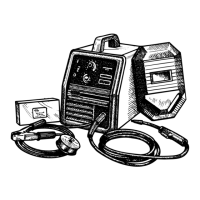

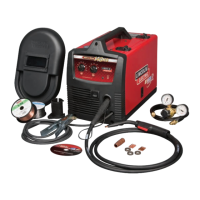
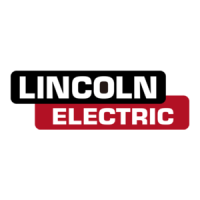
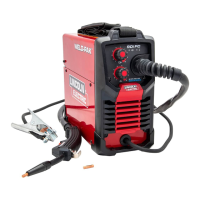
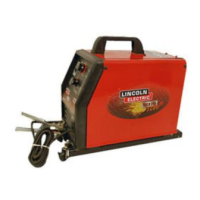
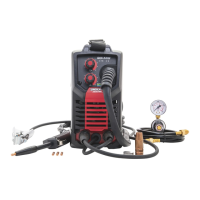
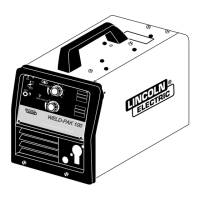
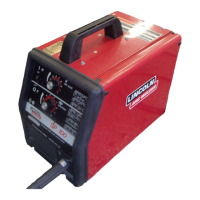

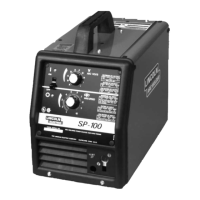

